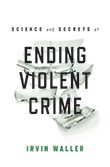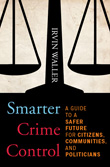In 2015, Presidents and Prime Ministers committed to a bold plan of action for the planet, that included significant reductions in homicides and violent crime before 2030. The plan for action at the UN General Assembly agreed to make transformations – not business as usual – to achieve 17 Sustainable Development Goals (SDG). The commitment to reduce violent crime is contained in SDG 16. In 2019, the UN Office on Drugs and Crime, UNODC, the main UN agency responsible for SDG 16, sounded the alarm that it will not be achieved without decisive action now.
Globally each year, half a million persons are murdered, twenty five million women or more are raped, and up to one billion children are victims of violence. The annual cost of this violence is estimated in trillions of dollars. These epidemic numbers can be cut by 50% by 2030, if governments take decisive action now to use tools that are known and agreed to prevent violent crime. Governments have a special opportunity to act at the UN Congress on Advancing crime prevention, criminal justice and the rule of law: towards the achievement of the 2030 Agenda in April 2020.
This blog highlights the tools that already exist but are not widely used. Solid violence prevention science identifies strategies that are effective and cost effective in reducing crime by 50%. Governments have agreed at UN (eg ECOSOC) to essential components to implement effective prevention strategies successfully. Cities have demonstrated already reductions of 50% or more in street violence.
The benefits of making transformations now are massive as they will save thousands of lives, stop millions of rapes, and avoid hundreds of millions of child victims of violence. These will save billions of dollars and in high violence regions increase Gross Domestic Product (GDP) significantly.
So governments must take decisive action now to get the tools used. These must: increase awareness of the strategies proven to reduce violence; develop and train the human capacity to use the guidelines for success; encourage cities to join communities of practice to learn from each others success; ensure ways to measure progress as what gets measured gets done; multiply more national prevention strategies that implement national plans, invest adequate and sustained funding, and demonstrate increases to economic growth.
Actions that are proven to have reduced crime by 50%
We know many actions that have been proven to prevent violent crime by 50% before it happens and we know that those preventive solutions are the most effective and cost effective way to reduce the violence – much more cost effective than the general social policies and criminal justice systems that dominate today. The evidence is solid, accumulated over several decades, and made available on open websites of the US Department of Justice, the World Health Organization (WHO) and several others.
In this blog, I present some highlights with short titles of proven projects in brackets.To make it easier for decision makers and those not yet versed in violence prevention science, I have explained the proven solutions in simple terms in Science and Secrets of Ending Violent crime with the proof that they work (see further sources at end). The short titles are indexed in the book.
While police play an important role, we must stop thinking of policing or arrests as the only – let alone – the most important solution to preventing violence. Here are some of the sectors that must be mobilised to tackle risk factors and causes and so prevent violence before it happens. Studies for each of these have shown a 50% reduction in clinical trials or city wide strategies.
Projects to be targeted to risk factors
Communities that limit access to alcohol (cities such as Bogota, Coahuila, Diadema) and guns (Bogota);
Family services that help parents provide positive nurturing (Positive Parenting Program, Multi-systemic Therapy – MST);
Health services where emergency care embraces ¨critical moment¨ solutions – social support for victims of violence to leave their high risk life style (Hospital Emergency Intervention, Glasgow) and social epidemiology – ie analysis of patterns that bring victims of violence to emergency care (Cardiff);
Police that solve hot spots (POP), and push potential offenders towards social services (focussed deterrence, diversion);
Schools that teach life skills (life skills), ways to regulate emotions (SNAP, Becoming a Man), and respect for boys and girls (4th R);
Youth services that outreach to young men at risk of violence (Youth Inclusion Projects, Cure Violence).
The General Programs are also important but not as cost effective as targeted programs
Reactive Policing variations for reacting to 911, investigation, arrest, justice and incarceration may also have impact but not 50% (national academy reports).
Social welfare that provides a safety net for food, housing, health and mental health care, jobs and schools have an impact but harder to quantify and takes many years (see Toronto Chicago comparison):
The agreed essentials for successful and sustained use of prevention
Imagine a world where governments invested adequately in preventing violence targeting these proven and cost effective ways to where they will save lives, trauma and wasted taxes.
We know that governments on the advice of their experts have agreed at UNODC, WHO and UN Habitat on essentials to implement these proven solutions successfully. WHO has produced an animated short video as a teaser to finding out more.
The essentials include a permanent unit to diagnose the roots of problems and propose ways to tackle them, training the analysts and planners, mobilising sectors able to tackle causes, engaging the public and providing sustained and adequate funding.
The use of proven solutions requires the implementers to understand the proven solutions and how to adapt them to local conditions. This requires human talent trained in courses such as those pioneered by partnerships in Oaxaca, CMNCP and soon the German Crime Congress.
Cities that have already reduced violence by 50%
UNODC shows that much of the world in Europe and Asia lives in cities and countries with homicide rates below the world average of 6 per 100,000. Being guided by these essentials in these lower violence regions will achieve significant reductions, as Glasgow in Scotland has shown. Glasgow took decisive action to act guided by a central violence reduction unit, which diagnosed the causes and their location. This led to social actions tackling the roots of violence in partnership with professional police action going beyond arrest to push at risk youth to those services. The services included youth services and services at critical moments in emergency rooms. Glasgow cut homicides in half in less than 5 years and maintained the reductions. The Mayor of London, England, has recently adopted this approach.
Unfortunately, other parts of the world live in areas with rates above the world average and in cases like several major US cities – not only Chicago and Philadelphia – they are at least 3 times the world average which is close to the average for Latin America. Some US cities as well as entire countries in Latin America and South Africa have rates ten times the world average. So these cities can learn from successes such as Bogota, Colombia in the 1990s, Diadema in Brazil in 2000s and Coahuila, Mexico in the last decade. There are also successes for shorter periods of time, such as Boston, USA in 1990s, Ciudad Juarez, Mexico in 2010s, and Recife, Brazil.
Powerful Reasons to Make the Affordable Transformations to Save Lives and Taxes
But getting governments to act on evidence to save lives remains the challenge for the Decade of Action starting in 2020 to achieve the goal of lives saved, rapes avoided and significantly less violence by 2030. Contrary to common political opinion, the public wants prevention more than punishment and politicians, including Mandela, running on tough on causes, tough on crime get elected.
The benefits of saving lives and quality of life is enough for many victim rights advocates to justify action. But there are other pragmatic benefits in taxes saved for governments and economic prosperity generated. For cities, below the average level, reducing violent crime saves significant police resources and cost of incarceration – in the US alone this may exceed $40 billion a year. For cities above the average level, particularly several times the average level, the benefits are often multiple percentage points increase in GDP.
Lobbying for action is already happening with movements such as those in the US – Black Lives Matter, Metoo, March for Our lives and Moms demand action on gun violence. Internationally it is being increased by Faith Based Organizations, Peace in our Cities Campaign, Las Tesis, German Crime Prevention Congress, Interamerican Development Bank, and UN organizations.
What We Need to do in 2020 to Shift to a Prevention Agenda to Save Lives and Communities by 2030
Keys to success in 2020 require governments, in collaboration with cities, civil society, police leaders, media, experts and so on to:
- raise awareness of effective preventive solutions and strategies, among politicians, civil society and faith based, and the public – using both social and traditional media ;
- foster and train the human talent to plan and implement effective preventive strategies successfully – applying international guidelines;
- learn from the successful cities through communities of practice;
- ensure ways to measure progress as what gets measured gets done – consistent with the important results oriented SDG framework;
- create the central planning units in all orders of government and invest adequately and sustainably in effective preventive solutions.
The benefits of saving thousands of lives, preventing millions of rapes and avoiding hundreds of millions of child victims of violence are clear. The investments are in people and they will save significant costs for the system of policing, justice, corrections and health that responds to violence and in high violence regions like the Americas will generate increases of several percentage points in GDP.
Further explanations and sources
More information is brought together in one place with full sources in Waller, 2019, Science and Secrets of Ending Violent Crime that explains to decision makers: the strength of the science and the sources (chapter 2); the examples of proven strategies (in chapters 3, 4, 5); the essentials for implementation in international resolutions (chapter 7); city and other successes (chapter 8 and 9); ways to get buy in and transformations (chapters 10-12). This blog links also directly to some specific references and will be updated as needed.

